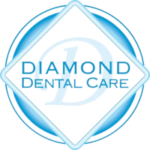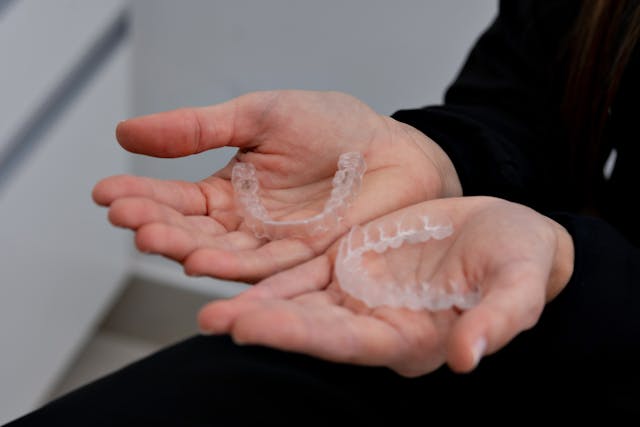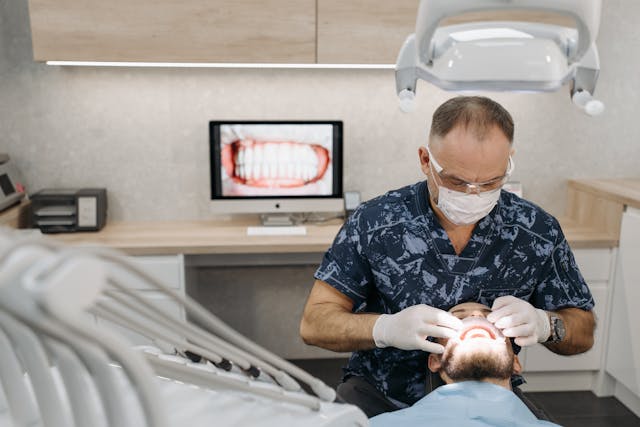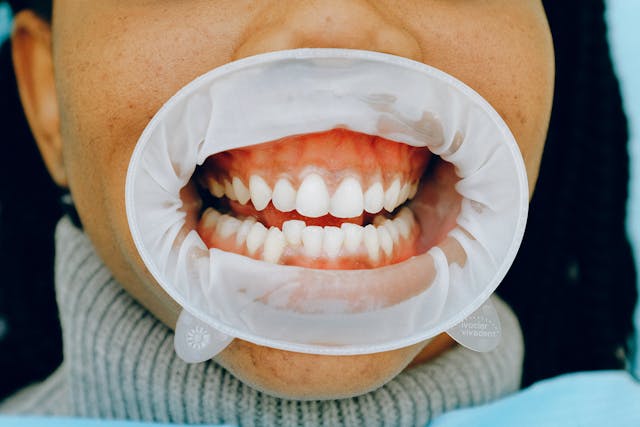The field of dentistry has seen remarkable technological advancements over the past few decades. These dental technology innovations are not just about flashy gadgets but have a significant impact on improving patient care. From enhanced diagnostic tools to advanced treatment methods, dental technology is revolutionizing how dentists approach patient care, making procedures faster, safer, and more effective.
At Diamond Dental Care, we offer a variety of solutions to address most aesthetic concerns. During your visit, we’ll perform a thorough examination, take X-rays, and discuss your desired timeframe before presenting you and your parents with several treatment options. Given that some treatments may require specific timeframes, it’s advisable to book your appointment with us as soon as possible.
To schedule an appointment, simply call us at (909) 860-7579. You can also connect with us on Facebook or share your feedback on Yelp. Thank you!
Digital Imaging and Diagnostics
One of the most significant advancements in dental technology is digital imaging, which has revolutionized how dentists diagnose and plan treatments.
3D Imaging and Cone Beam CT Scans
Gone are the days when dentists had to rely solely on 2D X-rays. Today, 3D imaging and Cone Beam CT (CBCT) scans allow for a detailed view of a patient’s anatomy, leading to more accurate diagnoses. This technology is particularly beneficial in implant planning, orthodontics, and complex cases that require precise mapping of the jaw and teeth structure.
Intraoral Cameras
Intraoral cameras have transformed the patient experience by providing real-time, high-resolution images of the inside of the mouth. These cameras allow patients to see what the dentist sees, leading to better communication and understanding of treatment options. It’s an excellent tool for educating patients and ensuring they’re fully informed about their oral health.
Laser Dentistry
Laser dentistry is another innovation that has greatly enhanced patient care. Lasers are used for a variety of dental procedures, offering precision and minimizing discomfort.
Soft Tissue Lasers
Soft tissue lasers are used in procedures like gum reshaping, periodontal treatment, and even biopsy. They provide a less invasive option, reducing bleeding, swelling, and healing time compared to traditional methods.
Hard Tissue Lasers
For hard tissues, like teeth, lasers are used for cavity detection, tooth preparation, and even treating tooth sensitivity. They allow for a more conservative approach, preserving more of the natural tooth structure and often eliminating the need for anesthesia.
CAD/CAM Technology
CAD/CAM (Computer-Aided Design/Computer-Aided Manufacturing) technology has brought about a revolution in restorative dentistry, making it possible to design and create dental restorations on-site.
Same-Day Crowns
One of the standout features of CAD/CAM dental technology is the ability to create same-day crowns. Patients no longer need to wait weeks for a crown to be fabricated in a lab. Instead, the dentist can design, mill, and place the crown in a single visit, saving time and reducing the number of dental appointments needed.
Precision in Dental Technology Restorations
Beyond convenience, CAD/CAM technology ensures that dental technology restorations are incredibly precise, leading to a better fit and longer-lasting results. This precision minimizes the risk of complications and ensures that restorations look and feel natural.
Teledentistry
The rise of teledentistry has changed the way dental care is delivered, particularly in remote or underserved areas.
Virtual Consultations
Teledentistry enables virtual consultations, allowing patients to seek advice and preliminary diagnoses without needing to visit the dental office. This is especially beneficial for patients with mobility issues, those living in rural areas, or during situations like the COVID-19 pandemic.
Patient Monitoring
Through digital platforms, dentists can monitor patient progress, manage post-operative care, and provide follow-up consultations. This continuous care ensures that patients receive timely advice and intervention when needed, enhancing overall patient outcomes.
Artificial Intelligence in Dentistry
AI is making waves in the dental industry, offering tools that can significantly enhance diagnostic accuracy and treatment planning.
AI-Powered Diagnostics
AI algorithms can analyze dental images with a level of precision that surpasses human capability. This dental technology assists dentists in identifying issues like cavities, gum disease, and even oral cancers at an early stage, leading to better patient outcomes.
Predictive Analytics
AI also plays a role in predictive analytics, helping dentists anticipate potential complications or outcomes based on a patient’s history and current condition. This allows for more personalized and proactive care.
3D Printing in Dentistry
3D printing dental technology is another game-changer, particularly in the fields of dental implants and orthodontics.
Custom Dental Implants
With 3D printing, dentists can create custom implants that fit perfectly with a patient’s anatomy. This precision leads to better integration and fewer complications, ultimately improving the success rate of dental implants.
Orthodontic Aligners
3D printing has also revolutionized orthodontics with the creation of custom, clear aligners. These aligners are tailored to the patient’s teeth, offering a more comfortable and aesthetically pleasing alternative to traditional braces.
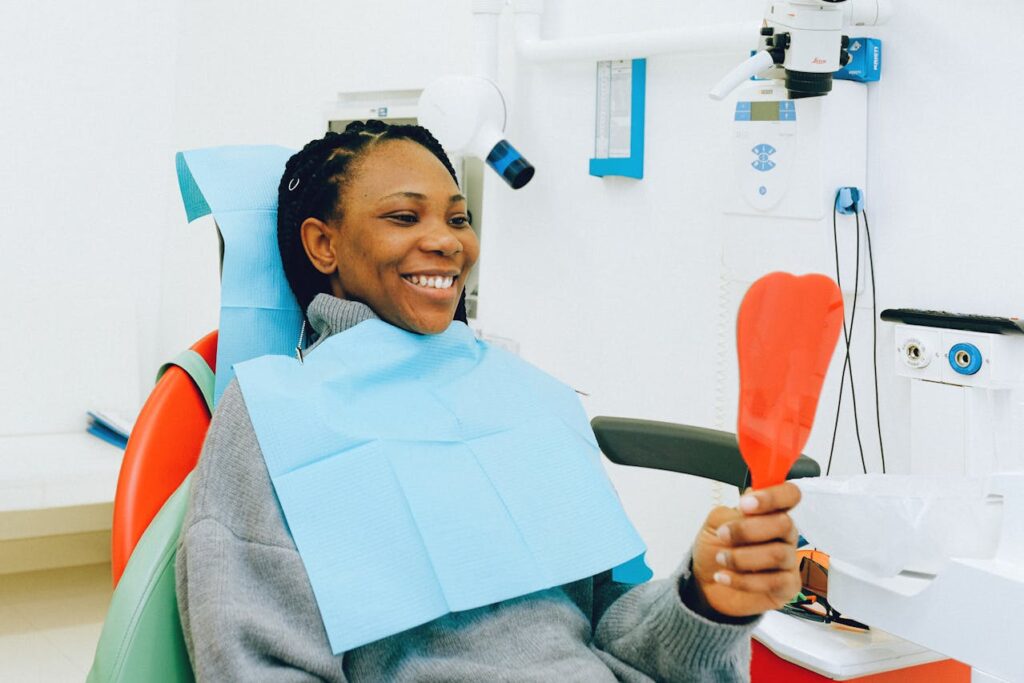
Digital Smile Design
Digital Smile Design (DSD) is a cutting-edge technology that allows dentists to plan and visualize the outcome of cosmetic dental procedures.
Personalized Treatment Planning
DSD uses digital tools to create a mock-up of the patient’s smile, allowing for precise planning of treatments such as veneers, crowns, and orthodontics. This personalized approach ensures that the patient’s expectations align with the final results.
Enhancing Patient Experience
By involving patients in the planning process and providing a visual representation of the expected outcome, DSD significantly enhances patient satisfaction and confidence in the treatment.
Advanced Dental Materials
The materials used in dental restorations have also seen significant advancements, contributing to better patient outcomes.
Biocompatible Materials
Modern dental materials are designed to be biocompatible, meaning they integrate well with the body’s natural tissues. This reduces the risk of rejection and allergic reactions, making treatments safer for patients.
Nanotechnology in Dental Materials
Nanotechnology has led to the development of stronger, more durable dental materials. These materials not only last longer but also mimic the natural appearance of teeth, providing both aesthetic and functional benefits.
Sedation Dentistry
Sedation dentistry has evolved to improve patient comfort and safety during dental procedures.
New Sedation Techniques
Newer sedation techniques offer a range of options, from minimal sedation (relaxing but awake) to deep sedation (almost unconscious). These advancements ensure that patients can undergo necessary procedures without fear or discomfort.
Safety in Sedation
With the development of advanced monitoring systems, sedation dentistry has become much safer. These systems allow dentists to closely monitor vital signs and adjust sedation levels as needed, ensuring patient safety throughout the procedure.
Regenerative Dentistry
Regenerative dentistry is an exciting frontier, with the potential to regrow teeth and oral tissues.
Stem Cell Research
Research into stem cells holds the promise of growing new teeth and repairing damaged tissues. While still in its early stages, this dental technology could one day eliminate the need for traditional dental restorations.
Tissue Engineering
Tissue engineering is another area of regenerative dentistry that is showing promise. By using scaffolds and growth factors, scientists are working on ways to regenerate lost or damaged oral tissues, potentially revolutionizing how we approach dental care.
Patient-Centered Dental Care
Modern dental practices are increasingly focusing on patient-centered care, ensuring that treatments are tailored to individual needs and preferences.
Personalized Treatment Plans
With the help of digital tools and advanced diagnostics, dentists can create personalized treatment plans that address the unique needs of each patient. This approach not only improves outcomes but also enhances the patient experience.
Enhanced Patient Communication
Dental Technology is also improving how dentists communicate with their patients. From digital records to educational apps, these tools help patients understand their treatment options and make informed decisions about their care.
Promoting Dental Health
Advancements in technology are not limited to the dental office. At-home dental technologies and apps are also playing a significant role in promoting oral health.
At-Home Dental Technologies
Smart toothbrushes and other at-home dental technologies are making it easier for patients to maintain good oral hygiene. These devices often come with apps that track brushing habits, provide reminders, and even offer feedback on brushing technique.
Dental Health Apps
Dental technology health apps are becoming increasingly popular, offering everything from appointment scheduling to oral health education. These apps empower patients to take control of their oral health, leading to better outcomes and fewer dental problems.
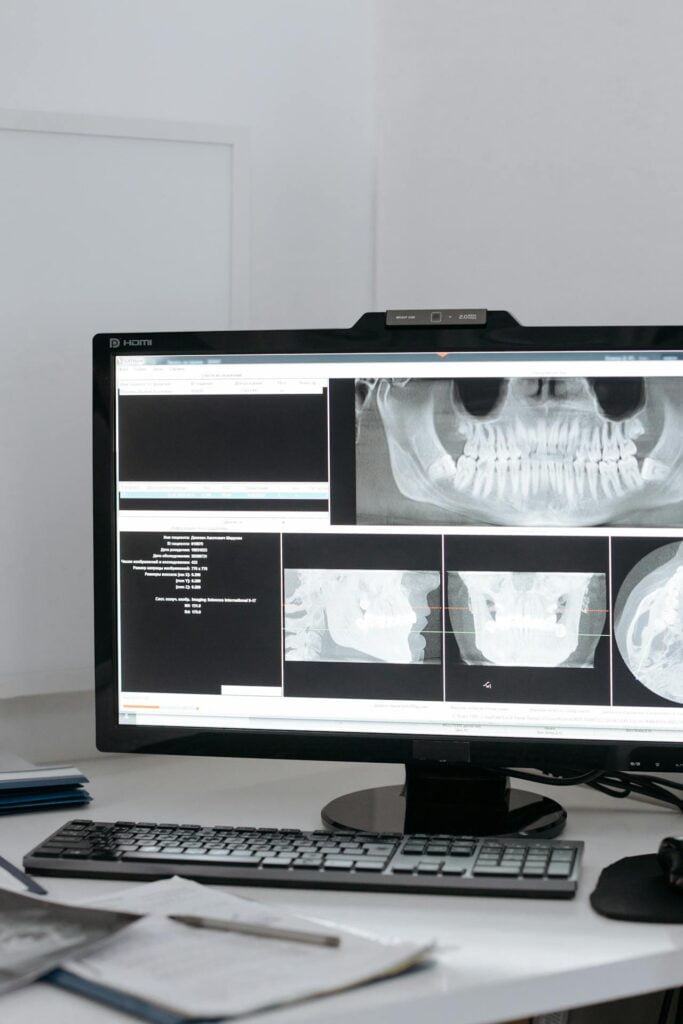
The Future of Dental Technology
The future of dental technology is bright, with new innovations constantly on the horizon.
Emerging Technologies
From robotics to genetic engineering, emerging technologies are set to further transform dental care. These advancements promise to make treatments even more efficient, effective, and patient-friendly.
Integrating Dental Technology in Everyday Practice
For dental practices, staying ahead of the curve means integrating these new technologies into everyday practice. By doing so, they can offer their patients the best possible care and stand out in a competitive market.
Conclusion
In conclusion, the latest innovations in dental technology are transforming patient care, making treatments more precise, efficient, and comfortable. At Diamond Dental Care, we are committed to staying at the forefront of these advancements to provide our patients with the best possible care. Whether you’re looking for cutting-edge diagnostics, advanced restorative options, or personalized treatment plans, our team is here to help you achieve optimal oral health.
FAQs
Q1: What is the most significant recent innovation in dental technology?
The most significant recent innovation is likely the integration of AI in diagnostics, which has greatly improved the accuracy and early detection of dental issues.
Q2: How does digital imaging improve dental diagnostics?
Digital imaging, especially 3D imaging, provides detailed views of a patient’s oral structures, leading to more accurate diagnoses and better treatment planning.
Q3: What are the benefits of laser dentistry?
Laser dentistry offers precision, reduced discomfort, faster healing times, and is less invasive compared to traditional methods.
Q4: How does CAD/CAM technology benefit patients?
CAD/CAM technology allows for the creation of same-day crowns and other restorations, saving time and improving the precision and fit of dental work.
Q5: What role does AI play in modern dentistry?
AI enhances diagnostics, offers predictive analytics for better treatment planning, and helps in the early detection of oral health issues.
